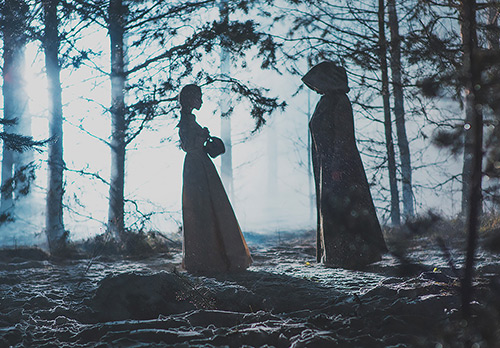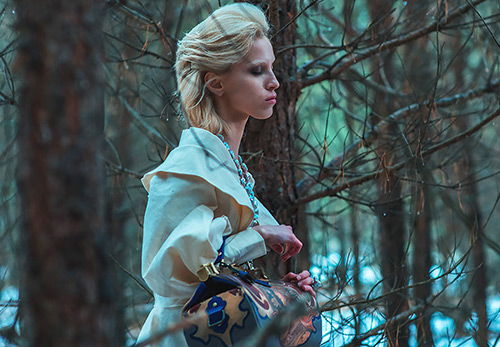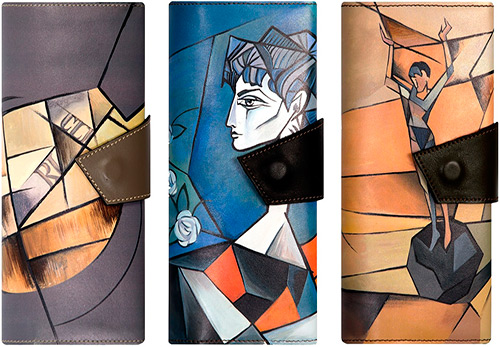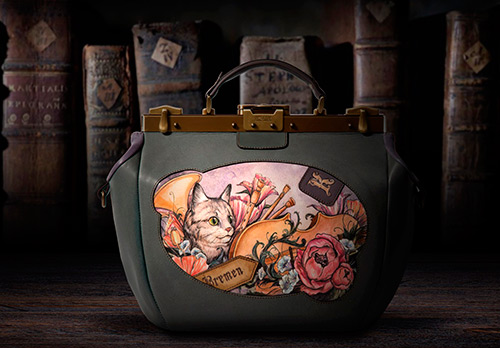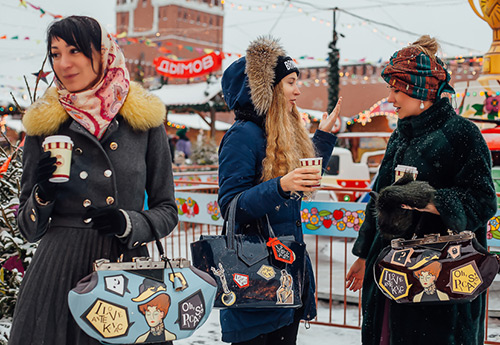Fashion handbags
All fashion styles in Ante Kovac bags
Each of us chooses his style according to his own taste, adhering to our beliefs or fashion preferences. Someone invents their own style by themselves, and someone creates their own style by taking stylist courses or re-reading fashionable books and magazines, drawing useful information from them.
Fashion trends, trends and styles are endless. Everyone can choose their own style, mixing and combining it with this or that style, creating their own unique image.
The Russian accessory brand Ante Kovac offers its own view of creating a unique image, producing from year to year a number of collections that will suit everyone, with one or another preference. Men and women, with their own vision of fashion, will be able to choose a suitable accessory for themselves, which can complement or complete the image, making it unique and unlike anything else.
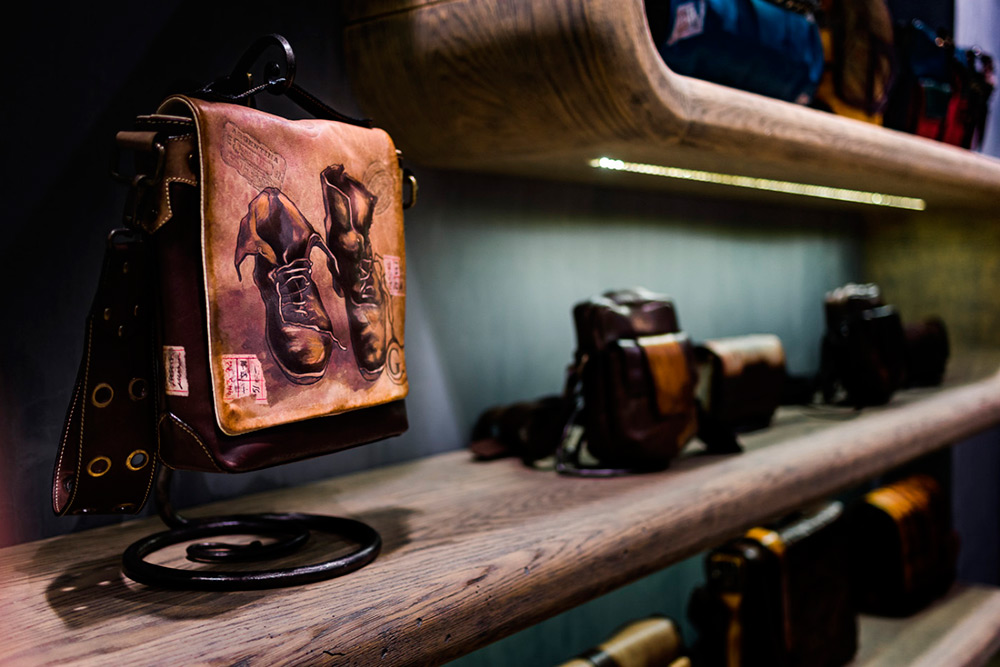
www.antekovac.ru
With each collection, over the past 10 years, the brand has been trying to amaze its admirers, each time creating collections inspired by many different styles. Art history can be studied through the collections of Ante Kovac. And if you have never heard of this or that style, purchasing your favorite bag, you can discover a lot of new things, and perhaps discover in yourself a love for a style that you have never heard of.
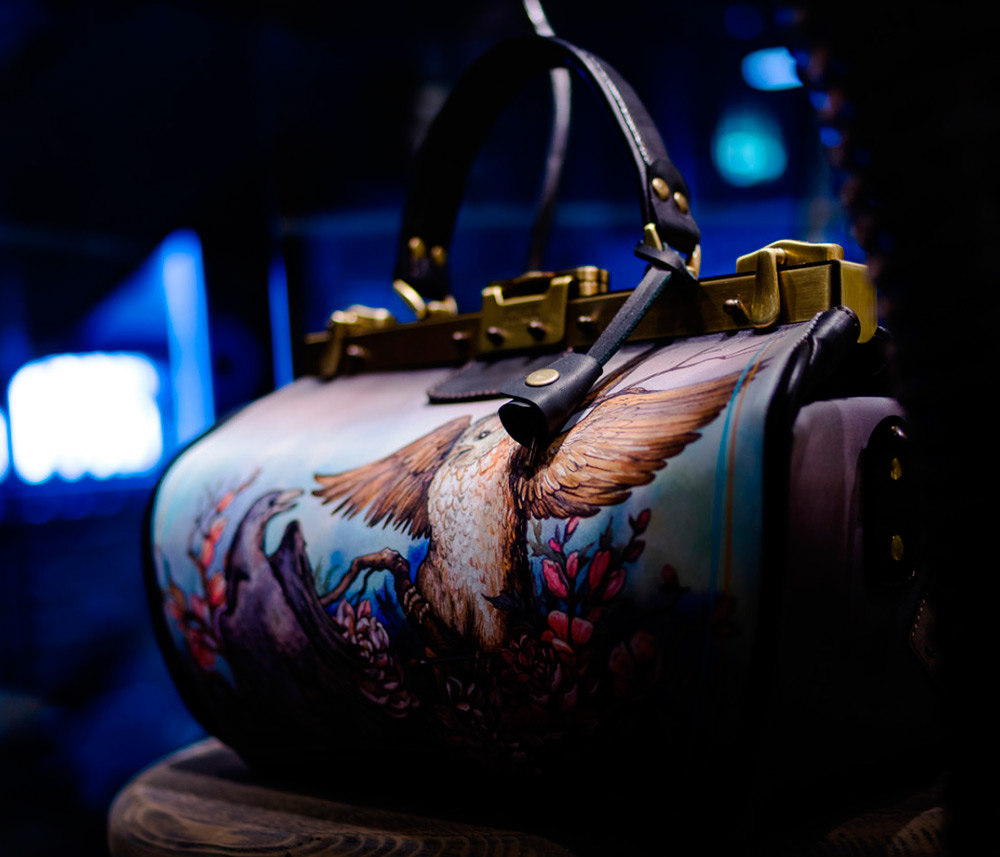
Art Nouveau bags
One of the main styles from which the masters of Ante Kovac draw inspiration is Art Nouveau, also known as Art Nouveau and Art Nouveau. Not only most of the brand's products have echoes of this style, but the interior of the brand's boutiques was created in this direction by the Yann Moserbach design studio, owned by the main designer and ideological inspirer of Ante Kovac - Anna Seregina. That is why the interior and bags are inseparable from each other and create a single whole.
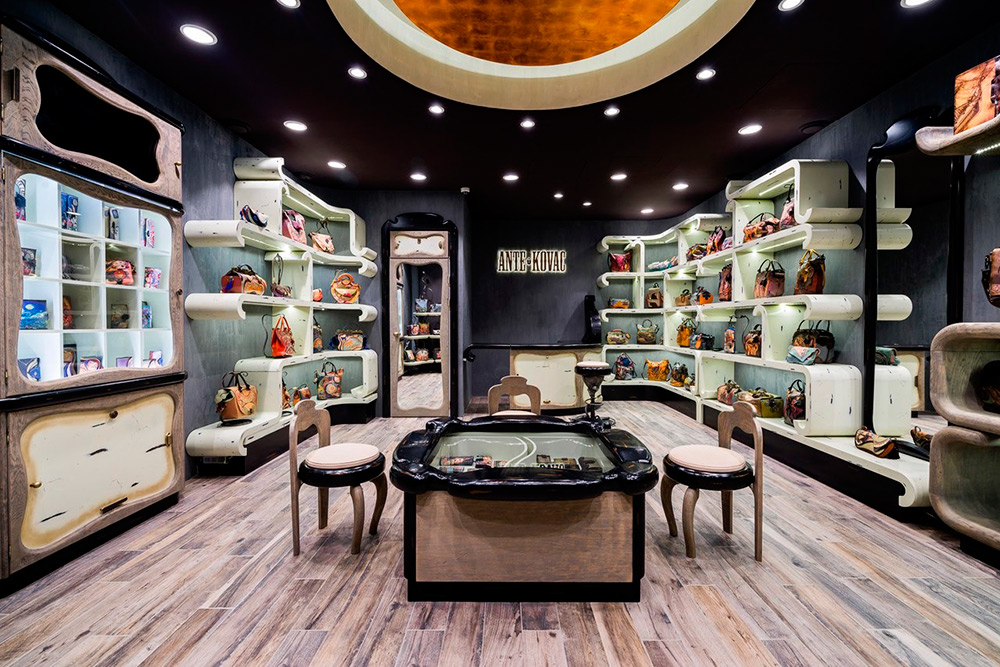
Modern (from French moderne - modern) is an artistic direction in art. The representatives of modernity were united by the anti-eclectic movement - the desire to oppose their work to the eclecticism of the previous period. Its distinctive features are the rejection of straight lines and angles in favor of more natural, natural lines, interest in new technologies (for example, in architecture), elements of applied art.
In different countries, the Art Nouveau style was called differently: in the USA - Tiffany (named after L.K. Tiffany), in France - Art Nouveau (French art nouveau, new art), in Germany - Jugendstil (German Jugendstil, young style ), in Austria - Secessionsstil style, in England - modern style (modern style), in Italy - liberty style, in Spain - modernism, in the Netherlands - Nieuwe Kunst, in Switzerland - spruce style (style sapin) ...
Modern period relatively short, has fairly clear chronological boundaries: from the late 1880s to 1914, the beginning of the First World War, which interrupted the natural development of art in most European countries.
The works of famous artists and sculptors of this era, such as Gustav Klimt, Alphonse Mucha, M.A. Vrubel, V.M. Vasnetsov, V.D. Polenov, sculptors such as Auguste Rodin, Camille Claudel had a great influence on the development of the Art Nouveau style. other.
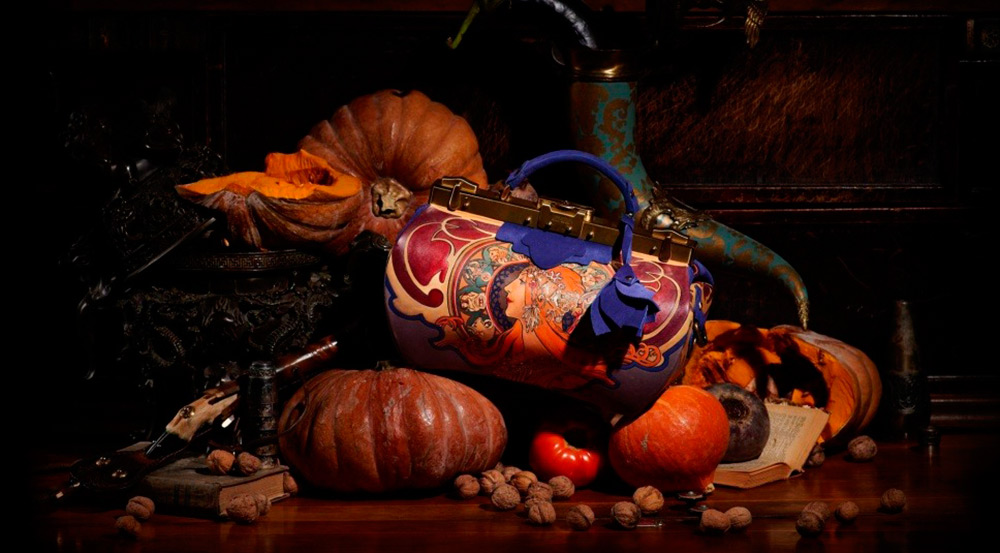
Ornament has become one of the main expressive and style-forming means in Art Nouveau. Striving for integrity, plasticity of external and internal, decorative and structural elements of the composition, dynamics and fluidity of forms are the distinctive features of the Modern style.
In Art Nouveau, there is a decorative and two-dimensionality of the image, the running of winding flexible lines, planar patterns. It didn't matter if the decor was intended for a book cover or for the facade of a building.
The Art Nouveau style reached its highest point of development at the turn of the 19th and 20th centuries, but was soon forgotten - leading architects now strived for simplicity and clarity of forms and showed more interest in machine technology than in manual work. The rich decor of the 1890s gave way to the geometric, unadorned surfaces of buildings from the early 20th century. Art Nouveau fell out of fashion and was only rediscovered fifty years later.
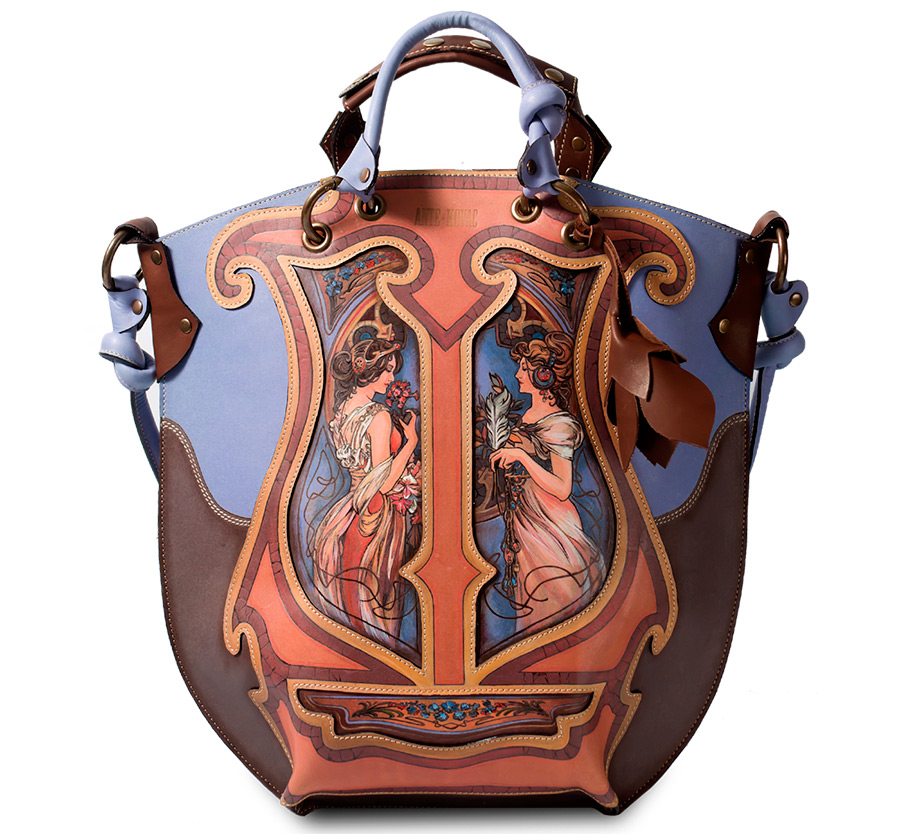
A striking example of the use of the Art Nouveau style in Ante Kovac products is, of course, the Alphonse Mucha. Art Nouveau collection. In addition to using the works of one of the most prominent artists of this style in the collection, the design of the accessories itself is made, as if in the days when Art Nouveau reigned.
According to the chief designer of the brand, Anna Seregina, it is the modern style that is the most beloved style of the brand, perhaps that is why the interiors of Ante Kovac are also made in a similar style. But at the same time, the design of the boutiques is individual and, in addition to modernity, there is something else special in it ... Perhaps a little from another style, which will be discussed further ...
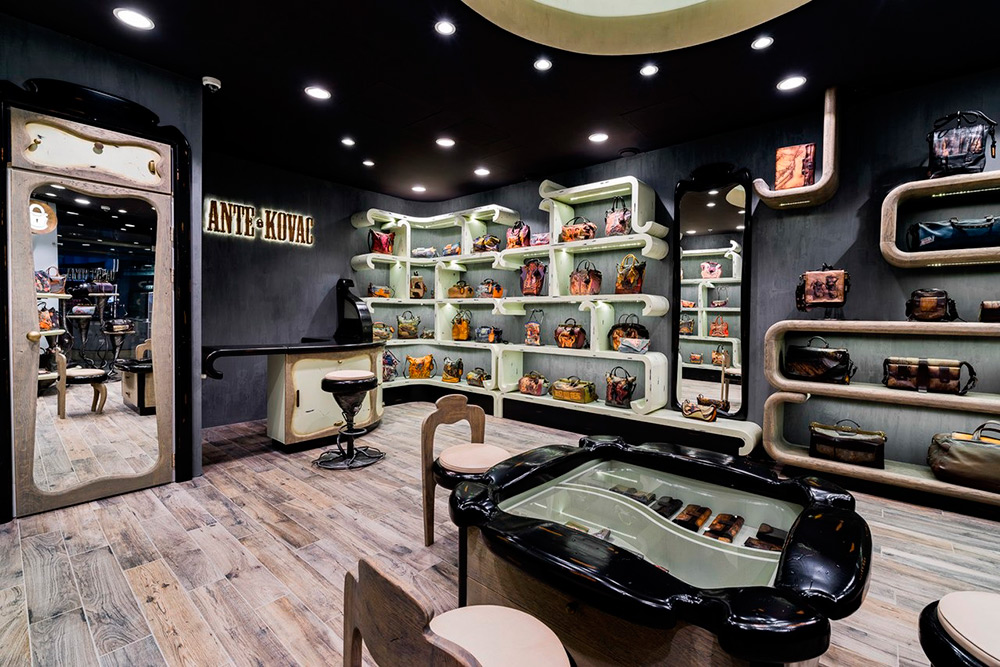
Steampunk bags
A style that also goes side by side throughout the history of Ante Kovac is steampunk. The brand's first showroom was reminiscent of a submarine, with shelves and furnishings crafted from aged iron with gears that are distinctive for the steampunk style.
The interior of the showroom was also created by the Yann Moserbach workshop, but at that time the Art Nouveau style was absent in the interiors of the brand, so you can trace the evolution of the Ante Kovac corporate identity.
Also one of the earliest collections was a collaboration with the famous Russian artist Vladimir Gvozdev, whose work depicting steampunk mechanical animals adorned Ante Kovac products. The recent men's collection "Discoverers" is partly sustained in a similar style, with a virtuoso aged leather texture, imitation of wood and iron.
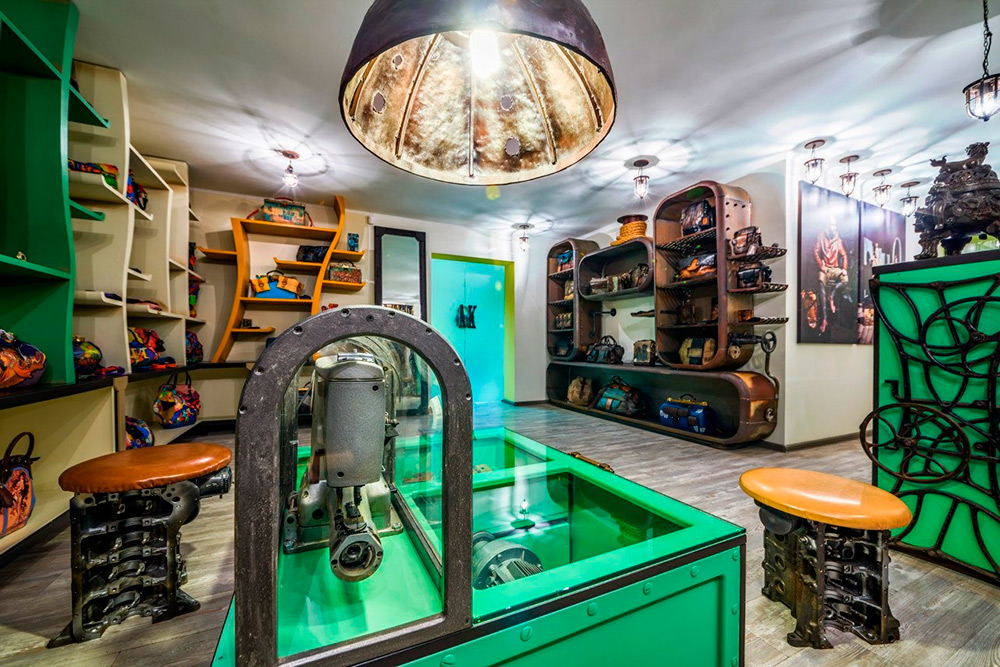
Steampunk (or steampunk) is a modern style based on a special direction of science fiction. It covers not only the style of clothing, but also the sphere of painting, interior decoration, and bijouterie. You can even say that steampunk has become a separate subculture, which is more fascinated by young men and women, not adolescent, but of an older age.
Although the style of steampunk clothing is considered modern, the second half of the 19th century is considered the cradle of steampunk. If anything, the cityscapes of Victorian England are the main image used in the illustrations of this style.
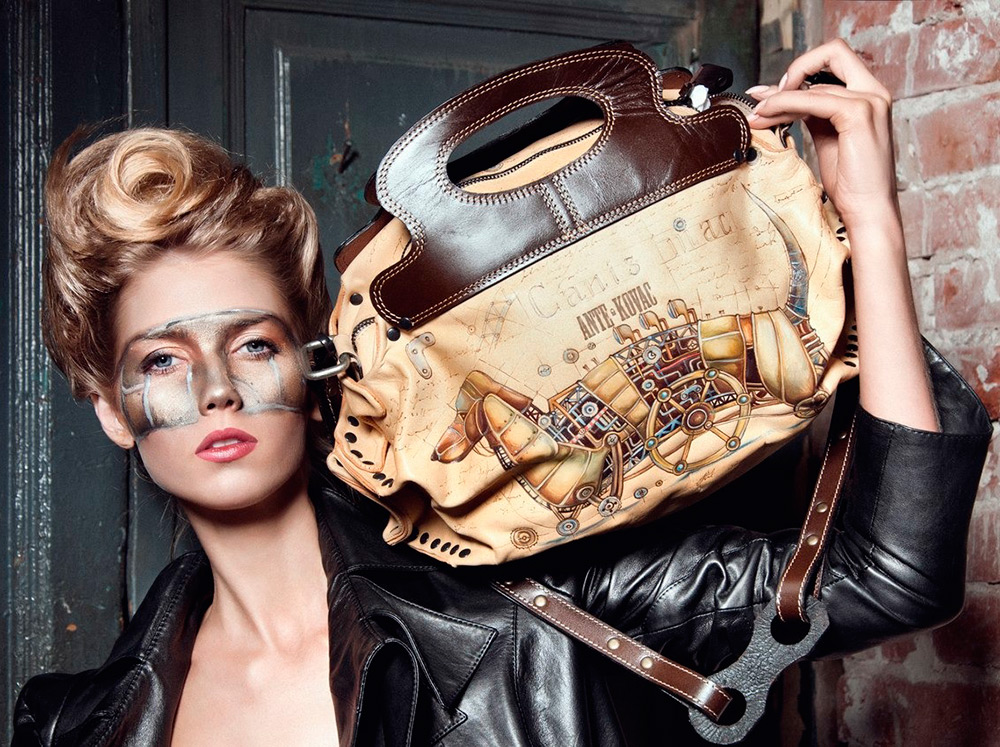
Steampunk, as a trend in art, in general, focuses on the mechanistic nature of nature, while mechanistic in the retro style. Airships, iron robots, as the first science fiction writers envisioned them, cogwheels and transmission shafts, heavy telephones and balloons - in a word, the mechanisms that make up space almost entirely represent a steampunk world, a dystopian world.
It is interesting that antiquity and modernity collide in it, the present world is drawn into the framework of the past. Figuratively speaking, Leonardo da Vinci's drawings live side by side with the metro and space exploration.
The term "steampunk" appeared in the 80s. However, the works that became his progenitors were published a little earlier, in the 60s-70s. Mary Shelley, HG Wells and, of course, Jules Verne are traditionally steampunk fans to the "founding fathers" of this trend.
Ante Kovac has appealed to great artists more than once, depicting their work on the brand's bags. One of these artists was a representative of the abstract art movement - Wassily Kandinsky. The collection "Kandinsky. Circus" is replete with bright colors and unusual forms, praising the great Russian artist.
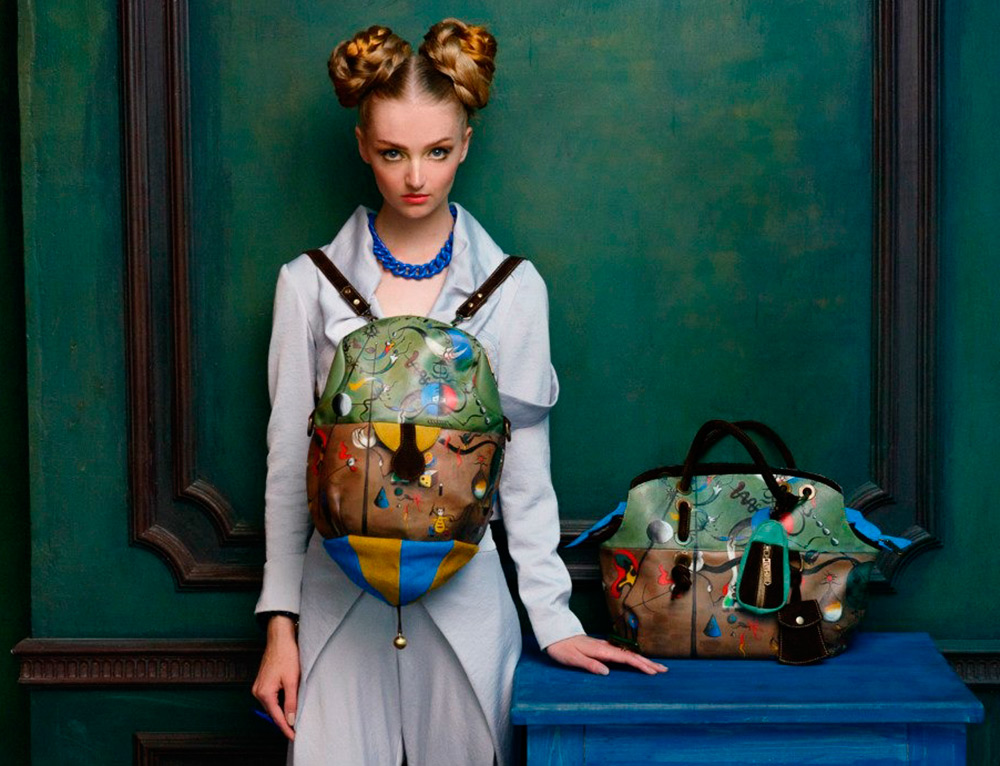
Abstractionism (art under the sign of "zero forms", non-objective art) is an artistic direction that emerged in the art of the first half of the 20th century, which completely abandoned the reproduction of forms of the real visible world.
V. Kandinsky, P. Mondrian and K. Malevich are considered to be the founders of abstract art.V. Kandinsky created his own type of abstract painting, freeing the impressionists' stains from any signs of objectivity. The history of art with the advent of abstraction has gone through a revolution.
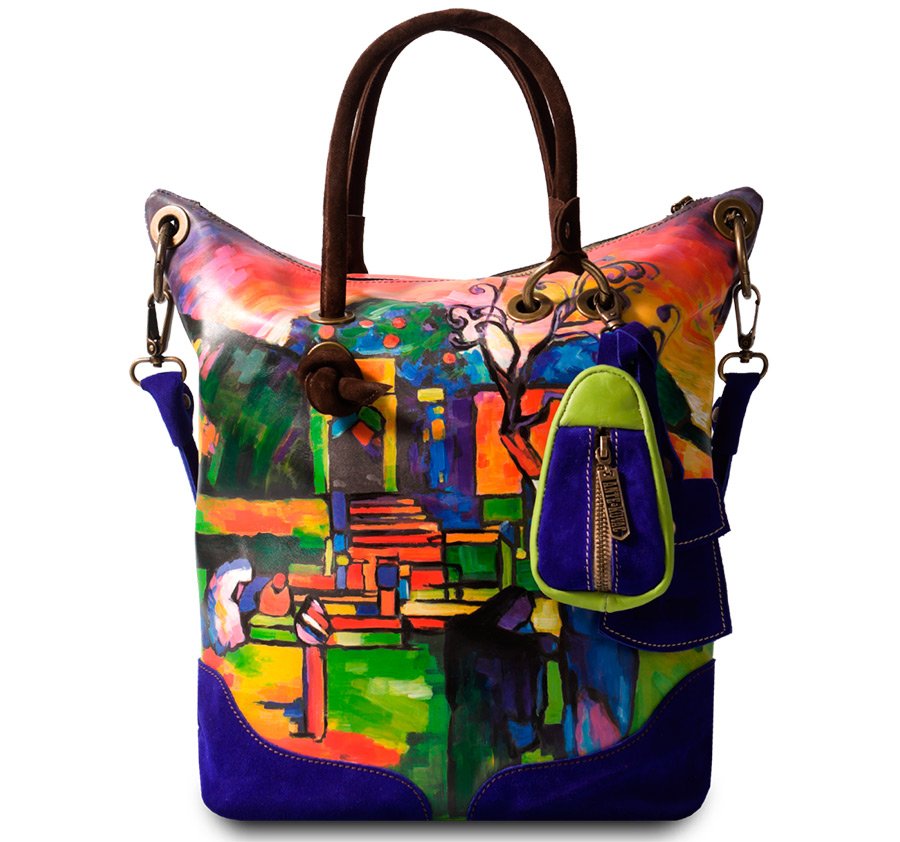
After World War I (1914-18), the tendencies of abstract art often manifested themselves in separate works of representatives of Dadaism and Surrealism; at the same time, the desire to find application for non-pictorial forms in architecture, decorative art, and design was determined (experiments of the Style and Bauhaus groups).
During World War II (1939–1945) a school of so-called abstract expressionism (painters J. Pollock, M. Toby, etc.) emerged in the USA, which developed after the war in many countries and proclaimed as its method the cult of unexpected color and texture combinations.
In the 60s. as one of the variants of abstract art, op-art developed; at the same time, during this period, abstract art as a current loses its position and is replaced by various directions.
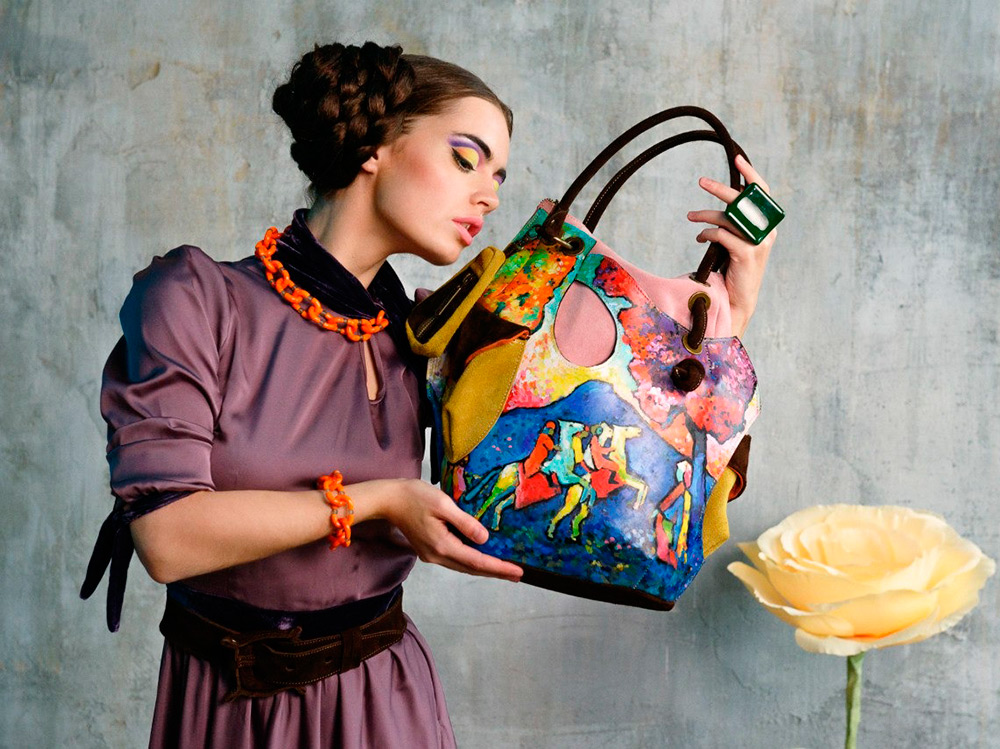
One of the bright and ideological collections of Ante Kovac is the "Van Gogh" collection, inspired by the works of Vincent Van Gogh, a prominent representative of the Post-Impressionism style.
The collection makes it possible to feel like the owner of the accessories of Van Gogh himself or his muse - according to the idea of the brand's designers, each product has a special tag with the words "Mr. Van Gogh" and "Mrs. Van Gogh", as if these things belonged to the artist himself.
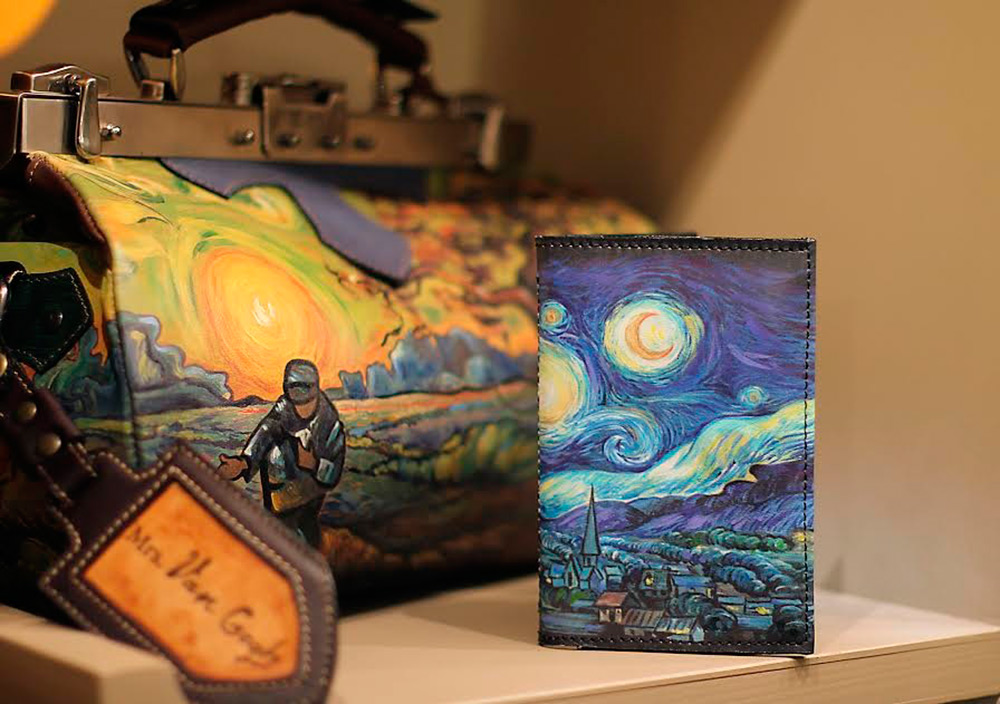
Post-Impressionism (Post-Impressionism), this term was first used by the English critic Roger Fry in relation to various directions in art that emerged in France in the period from 1880 to 1905 as a reaction to impressionism.
Post-impressionism artists were looking for new and, in their opinion, more expressive means in tune with the era. Van Gogh's works, for example, are based on bright colors, expressive designs and free compositional solutions.
Artists of this trend, moving away from the academic depiction of reality (realism in painting), also refuse to search for the expression of momentary impressions (the work of the impressionists).
They are already striving to depict the most basic, "main" elements of the surrounding world. Constantly competing for ways of expression with changing impressionism (existing in parallel), post-impressionist artists even resort to decorative stylization.
Unlike the impressionism that gave rise to them, they do not limit themselves to finding ways to look at reality, but go further - expressing what they see with a look that is not identical to reality, gradually abandoning realism. After many experiments, the directions that developed in post-impressionism were formed, and the directions themselves, over time, would give rise to a variety of styles of modernism (Modernism).
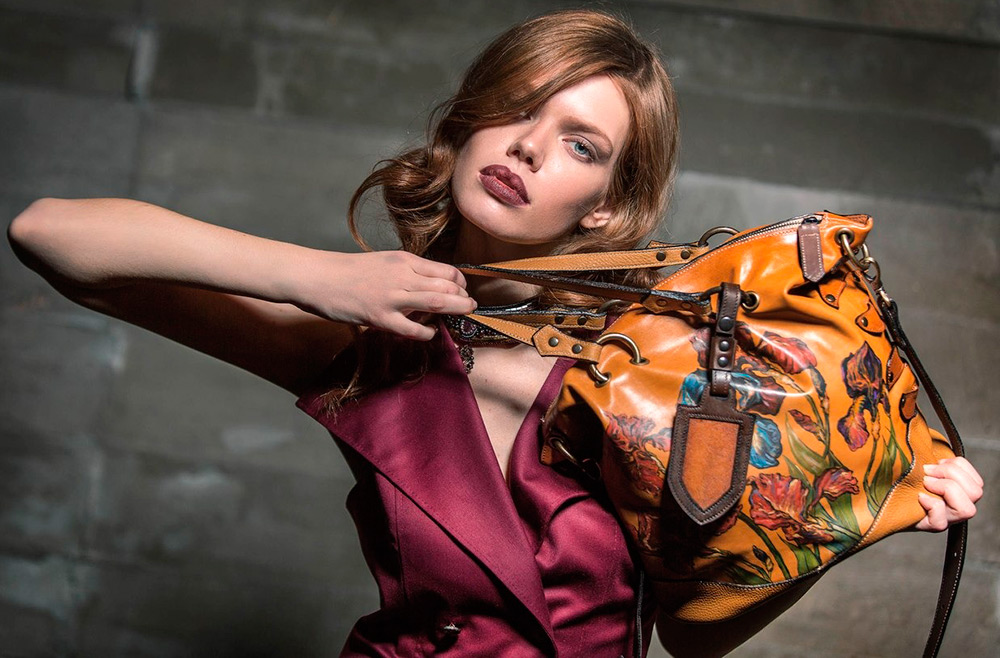
It is simply impossible to list all the styles with which the masters and designers of Ante Kovac worked; this will require publishing a separate book. The brand draws inspiration from everywhere, combining different styles and directions, from which the unique style of the Ante Kovac brand is born, opening endless horizons of art for all admirers of beauty.
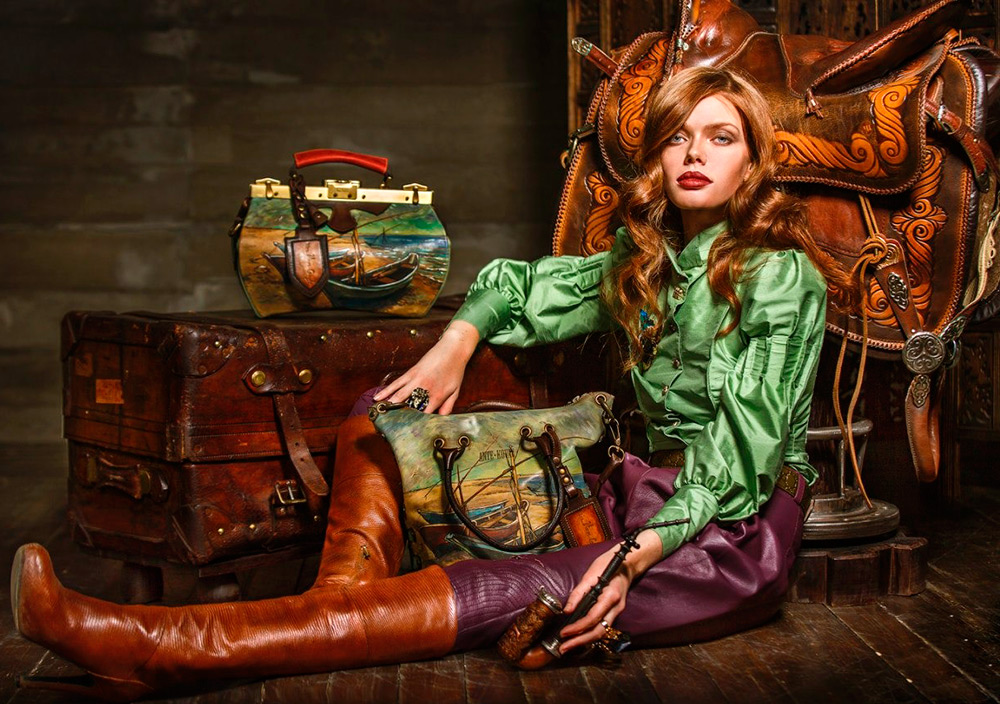
Comments and Reviews
Add a comment
Rating news
Shades of clothing that make women look younger
What shades of hair make women younger: rules and photos
Funny wedding dresses - photos and ideas
12 most expensive down jackets for the winter
How to look 25 at 40: tips from supermodels
Beautiful schoolgirls
Anti-aging haircuts and hairstyles for women
Fashionable skirts for autumn and winter
Fashionable women's trousers for the cold season
Fashionable and stylish sandals for summer 2024
Spring-summer 2024
 Fashionable dresses and tops with thin spaghetti straps
Fashionable dresses and tops with thin spaghetti straps
 Bandana tops: how to wear stylishly and beautifully
Bandana tops: how to wear stylishly and beautifully
 How to put together the perfect men's wardrobe for the summer
How to put together the perfect men's wardrobe for the summer
 Trendy shorts for spring-summer 2024
Trendy shorts for spring-summer 2024
 Fashionable skirts for spring-summer 2024: a guide to online shopping
Fashionable skirts for spring-summer 2024: a guide to online shopping
 The most fashionable dresses spring-summer 2024: styles and colors
The most fashionable dresses spring-summer 2024: styles and colors
 Fashionable total look 2024: image ideas and trends
Fashionable total look 2024: image ideas and trends
